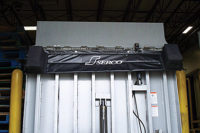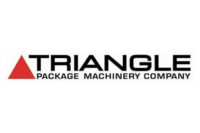
On Guard
by Lynn Petrak
Dairy packages sport an array of safety and security features,
designed to keep out pathogens and predators alike.
Safety and security have been on the nation's
collective consciousness for some time, and with good reason.
Sky-is-falling scenarios aside, there are genuine concerns and realities
about the nation's food supply, including perishable dairy foods and
beverages.
Although the dairy industry is not under as much fire
and may not pose the same risks as other markets, such as the meat and
poultry sector, foodborne pathogens like salmonella, listeria and E. coli still have potentially serious consequences. The Council of
Agricultural Science and Technology (CAST) estimates that up to 33 million
cases of foodborne diseases occur each year in the United States with an
annual cost of $5 billion to $8 billion. Some of those illnesses are
linked to dairy products.
On the security side, in an era of color-coded warning
systems and a general buttoning up of production and packaging, the threat
of bioterrorism cannot be taken lightly, from either foreign or domestic
culprits. Ever since September 11, 2001, the issue has been on the table
for many manufacturers.
In fact, government regulations now address
bioterrorism specifically as it relates to food production. Under the
Bioterrorism Act of 2002 passed by Congress, all domestic food
manufacturing facilities were required by mid-December to register with the
U.S Food and Drug Administration (FDA). Food manufacturers also must now
give FDA prior notice of any imports, and this month, the agency is
expected to announce final rules on administrative detention and
recordkeeping.
Packaging for food safety and security may not be the
biggest focus of packaging innovations right now – think convenience
and high-impact graphics – but the desire for tamper-proof features
is practically a given. Indeed, say some packaging suppliers, it is almost
always a consideration when mulling over designs and prototypes.
"Tamper evidence is usually in the top four or five things they are
concerned about," reports Jeff Keller, vice president of strategic
business development for Tetra Pak North America. The Vernon Hills, Ill.,
packager provides dairy manufacturers with several types of packages, from
traditional gable-top milk cartons to bottles with screw-top closures to
aseptic bricks and boxes.
Sharon Lobel, president and chief executive officer of
Long Island, N.Y.-based Seal-It Inc., underscores the fact that dairy
processor interest in tamper-proof features stems directly from consumers.
"I think tamper evidence to the consumer is very important. I want to
know if I'm the first one to touch that product," says Lobel.
"It's a vote of
confidence."
confidence."
Ultimately, safety and security do not exist in a
vacuum. They are concepts that apply just as much to quality and freshness
as they do to preventing any intentional harm or halting a specific
pathogen. "It's all tied together. We provide zipper-type
packages or tear-strip features on shredded cheeses for the purpose of
freshness, recloseability and safety," reports Dennis Bonn, a vice
president of marketing for North American food, flexible and specialty
packaging for Chicago-based Pechiney Plastic Packaging Inc., recently
acquired by Montreal-based Alcan. "In that market segment, it is probably for all three
reasons that customers have requested it."
Such a multi-purpose approach makes it easier for
dairy customers, who can add one or two tamper-evident materials and
benefit in numerous ways. The growing use of shrink-sleeve labels, which
offer a colorful billboard effect along with various safety features, is
one example. "You are doing primary decoration as well as providing
packaging with tamper evidence in one application," says Neil
Konstantin, president of shrink-sleeve material and equipment maker PDC
International, South Norwalk, Conn.
Lobel agrees. "A shrink-sleeve label offers 360
degrees of printing," she says. "You can have a less-expensive
container and make it look like anything you want, which is a big savings
to the customer."
Not Shrinking From Responsibility
Shrink-sleeve labels have already revolutionized
packaging to a large extent. The trend, which now extends even to items
like salad dressing, gained momentum in the single-serve milk bottle
category where it still reigns.
The newest generation of shrink sleeves includes extended labels
that fit over a closure, which are perforated when opened. Konstantin foresees
such extended-sleeve labels as an efficient choice for processors. "The trend
is there, but dairies have yet to take advantage of it fully," he says, adding
that other food items like pudding cups and fruit cups are packaged with fully
extended sleeves. "The technology could also be used on things like cultured
product or dips, where you are both decorating tapered tubs and providing tamper
evidence over the closures."
Extended labels offer other benefits, such as up-front
identification at the store level. "At the point of purchase, the
consumer can verify the integrity of the external seal, which they
can't do with an inner seal," says Konstantin.
Seal-It also provides extended sleeves to several of
its dairy customers who want an all-inclusive approach to tamper proofing.
"I think it helps sell your product that much better," says
Lobel, adding those labels can be done at a "reasonable" cost.
In addition to extended shrink-sleeve labels, Seal-It,
PDC and other suppliers also offer tamper-evident plastic bands that can be
wrapped around lids, caps or closures. Like sleeves, bands are proving that
what is functional doesn't have to be generic. Seal-It's
tamper-evident bands can be printed in several colors, as well as with
logos or additional graphics. "We also can do it with a message on
it, like the brand name or a statement along the lines of "'Do not use if band
isn't on,'" says Lobel, adding that perimeter shrink bands are
appealing to consumers because of their simplicity. "It's been
shown that tamper-evident bands are more formidable to the consumer because
they are visible — with a cap, you're not always sure and you
can't see it right away."
Tamper-evident bands are currently used for many
different dairy package formats, such as cultured products like sour cream,
cottage cheese and some pudding containers. Ice cream packages are
increasingly sporting shrink bands as well. Unilever's Ben &
Jerry's brand, South Burlington, Vt., added a clear recyclable shrink
band to its pints almost two years ago, while Orrville, Ohio-based
processor Smith Dairy uses Seal-It's PVC shrink band for its
rounded-corner paperboard ice cream cartons.
Topping It Off
Sound decisions often come from the top, and the same
can be said for dairy products fitted with protective caps, closures, lids
or seals.
For fluid dairy products, including milk, cream and
dairy-based blended beverages, the most common safeguard is a secure cap
that doubles as a guarantee against leakage. Dairies can choose from
different cap and closure models — again in a multitude of styles and
colors — from many suppliers.
Safety rings on plastic containers and jugs have been
a popular feature for years. A broken ring is an immediate and visible
signal that a bottle has been previously opened. Tear strips, wrapped
around a cap and designed to be pulled off at the point of opening, have
also become a staple of the beverage category.
Because some safety rings and strips are flimsier than
others, packaging suppliers have enhanced technology to create more secure
versions. Indianapolis–based Alcoa Closure Systems International
(CSI) recently extended technology from one of its longtime juice
applications to dairy products for single-serve milk bottles as well as
gallon-sized high-density polypropylene (HDPE) and PET containers. Alcoa
CSI's Seal-MAX™ closure, available for screw-top bottles,
prevents leaks and provides tamper evidence, thanks to a robust molded
liner and Extra-Lok™ tamper band. "The issue we've seen is
that there have been problems with tamper bands either coming off with the
closure or falling off milk bottles," explains John Krasich, Alcoa
CSI global business development director. "The Seal-MAX tamper band
separates easily from the main part of the closure and does a good job of
hanging on to the bottle." To complement the rainbow of colors on
today's milk bottles, the closure is available in a variety of
colors, says Krasich.
Portola Packaging, San Jose, Calif., also offers
sophisticated tamper-evident fitments and closures. One example is the
company's Easy-to-Open Inner Pull Ring, a two-piece snap-on closure
made from a threaded injection-molded bottom component and an
injection-molded top component that screws into the threads of the bottom
piece. Both pieces are joined as the cap is snapped on to the
bottle's neck finish and separated when a consumer screws off the top
piece and removes the pull ring. For safety and security purposes, Portola
also offers dual tamper-evident fitments, featuring external and internal
tamper-evident designs, with a molded membrane and external tamper-evident
band.
In addition to two-piece closures, screw-top and snap
caps are frequently paired with an inner seal for an extra layer of
protection. Foil and foam seals can usually be provided by cap and closure
suppliers, although they do require an extra step on the packaging line.
Under-lid seals are common in many dairy products. Several yogurt
cups feature either a foil or film seal under a lid that would be obvious if
penetrated. Ice cream packages increasingly are designed with seals, again added
for determination of puncture or tears. "We do a lot of foil-lidding material
and are the exclusive supplier for Häagen-Dazs," says Bonn.
Tamper-evident features at the top of a product
aren't limited to caps and closures for beverages. Flexible packages,
like those used for cheeses, also commonly include some type of
tamper-evident feature at the top, again used to guarantee freshness as
much as to guard against adulterated contents. Pechiney's zipper
closures and tear-off strips are one example, and have led most shredded
cheese pouches and shingle packs of sliced deli-style cheeses to be
outfitted with similar tamper-evident components. "It's more
for ease of opening than anything else, but once it's been opened, it
would be tamper evident," says Bonn. Chunk cheeses, by and large, are
not yet designed with such reclosable features, he adds.
Providing True Stability
Although many efforts to ensure safety and security
center on protective features like tear-strips, zippers, lidding and
closures, sometimes the product form itself is changed. For instance, first
popularized in Europe, shelf-stable products sold in aseptic packages are
now making their way, albeit slowly, to the American marketplace.
Tetra Pak has developed many prototypes for aseptic
packaging, including some for dairy-based items. The company supplies the
unique layered Prisma® packaging for single-serve, shelf-stable boxes of milk
from Horizon Organic, Longmont, Colo., now sold in supermarkets as well as
through the ubiquitous Starbucks Coffee chain. Tetra Pak recently has used
similar technology for brick packages of dairy-based liquids used for
foodservice, such as shelf-stable crème brulée and
hollandaise sauce bases.
Shelf-stable products in aseptic packages provide the
ultimate protection against foodborne pathogens because they are processed
at ultra-high temperatures to kill off any bacteria. That said, packages
also feature tamper evidence for security reasons, in the form of caps and
puncture- or tear-evident brick materials. "We are able to take all
the food safety issues out of the kitchen and back to the manufacturing
facility," says Keller. "You are not giving up taste or
quality."
Aseptic milks may not be mainstream yet, but they are
expected to take hold in some sectors because they offer advantages besides
food safety, including the ability to be stored on the shelf and
distributed without refrigeration.
Keller, for his part, predicts growth in many types of
distribution channels. "We are hot on the trail of club stores. If
you think about club stores, they are for people who stock up," he
says. "Another channel with interesting potential is the dollar
store, which is a non-refrigerated channel that does sell a lot of food.
They will be one of the fastest growing areas for foods."
Vending machines and school lunch programs, he adds, offer other
possibilities for aseptic single-serve products that are both safe and secure.
Lynn Petrak is a freelance
journalist based in the Chicago area.
$OMN_arttitle="On Guard";?>journalist based in the Chicago area.


